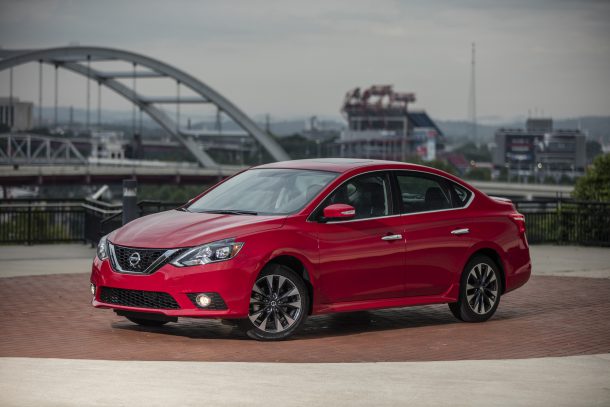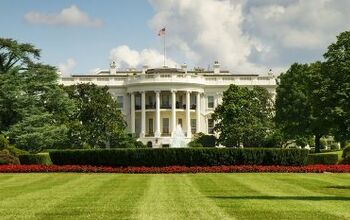Still Hot After All These Years: Not Every Passenger Car Model Has One Foot In the Grave

I often joke that not only are we all destined to buy a crossover in the near future, we’ll one day become crossovers. Oh, how the TTAC guys laugh…
Still, it’s hard to avoid the crossovers-are-replacing-cars narrative, as it isn’t some far-out theory — it’s a cold, hard reality. Crossover and SUV market share grows each year as buyers abandon traditional passenger cars in favor of a vehicle that does everything at least marginally.
That said, not every model faces the same rate of abandonment. Certain cars — through a hazy combination of performance, value, nameplate recognition, and other, more nebulous factors — haven’t yet been dropped off on the front steps of the orphanage by their once-loving guardians.
Let’s take a look at some surprisingly healthy performers in the non-premium, non-sports car class. Cars that aren’t declining in popularity, as this analysis isn’t about overall volume. Guess what? None of these vehicles are the Toyota Camry or Honda Accord, two models currently locked in a battle for midsize sedan supremacy (and worthy of their own singular coverage).
Hard to believe, we know, but there’s loyalty and desire to be found elsewhere.
Everything Subaru Builds*
*except the BRZ
Notwithstanding its rear-drive tie-up with Toyota, all Subaru-badged vehicles, even cars, are a license to print money. With one month left remaining in 2017, Subaru’s Impreza is already enjoying its best U.S. sales year in history. Year-to-date, Impreza sales are up nearly 33 percent, with November volume up 95.6 percent, year-over-year.
It’s no different with the Impreza’s lifted sibling, the Crosstrek (which I don’t consider a crossover). The tippy-toed compact is enjoying its best sales year thus far, with November sales volume up 22.7 percent. Volume over the first 11 months of 2017 is 14.5-percent higher than the same period last year.
Despite its November sales falling just over 19 percent, year-over-year, sales of the Outback wagon are on track to crest last year’s record tally of 182,898 vehicles. Only the midsize Legacy, which recorded its best sales year in 2016, isn’t likely to surpass the previous year’s mark. Afflicted with the midsize sedan curse, Legacy sales have fallen, year-over-year, for 11 consecutive months, with YTD sales down 23.7 percent.
Volkswagen Golf
Except perhaps the older-generation Honda Civics, no nameplate conjures up images of a rear hatch quite like Volkswagen’s Golf. Offered exclusively as a hatch up until VW made the decision to market the Sportwagen (let’s just call the former mechanically identical Cabriolet the Cabriolet), the Golf name still resonates with buyers. Year-to-date, 16.2 percent more U.S. buyers took home a Golf than in 2016. As a refreshed 2018 model bows, the execs in Wolfsburg can expect the model to surpass its 2015 U.S. high water mark of 65,308 vehicles this year.
Honda Civic
Another model expected to break a sizzling 2016 sales record is the ever-popular Honda Civic. Sporting a design hated only by the sick and perverted, and now offering three bodystyles and four power levels, Civic sales in the U.S. have climbed, year-over-year, for the past five months. November sales rose 23.2 percent, year-over-year. Over the first 11 months of 2017, the Civic eked out a 3.1-percent sales gain.
Nissan Sentra
There’s something to be said for the Value Proposition. And nothing says “value!” quite like the Nissan brand — hell, the company built its American reputation on it. Though not mentioned in the same excited tones as the Civic, the Nissan Sentra deserves kudos for staying in the hearts of the U.S. buying public. It helps that Nissan added a turbocharged engine (and a NISMO variant) in 2017 for sensible speed fans who don’t like making a splash.
Sentra sales rose to a record 214,709 units last year — double the model’s volume in 2012. Despite 2016’s lofty sales, volume over the first 11 months of 2017 is up 2 percent. November sales rose 25.2 percent, year-over-year.
Nissan Maxima
Hey, what’s this thing doing here? No one’s talking about the Maxima, at least not with nearly the same regularity as the Honda Accord and Toyota Camry. While I consider myself a fan of the current generation’s styling, no one considers themselves a fan of the model’s CVT-only performance. Nissan’s early attempts to endow this Maxima with a “sports sedan” badge didn’t get tongues wagging, but it hasn’t stopped the model from racking up decent sales.
Better than decent, really. Maxima sales are on track to reach an 11-year high in 2017, with year-to-date sales up 9.1 percent. November volume was up 51.3 percent. Who knew?
Mitsubishi Mirage
Now we’re getting to the good stuff. Desire, thy name is Mirage. Okay, while no one longs for Mirage ownership — except perhaps Quebecers (despite having the option of the not-available-in-America Nissan Micra) — the sole remaining car in Mitsubishi’s lineup has seen demand rise each year since its 2012 introduction (for the 2013 model year). Sales over the first 11 months of 2017 are up 3.3 percent. There must be something magic in that 78-horsepower, 1.2-liter three-cylinder.
[Images: Nissan, Honda, Volkswagen, Mitsubishi Motors, Subaru]

More by Steph Willems
Latest Car Reviews
Read moreLatest Product Reviews
Read moreRecent Comments
- 3-On-The-Tree Was stationed at Ft Rucker AL going through army flight school and Aircraft Qualification Course for AH64D’s. Lake Martin is nice and the close proximity to Fl was nice as well.
- 28-Cars-Later Maybe try subtracting some superfluous models?
- FreedMike They just opened a Buc-ees north of Denver on 25. Haven't had the urge to check it out yet but I hear these stores are a trip.
- Kwik_Shift_Pro4X I'd rather see a Mazda 6 wagon.
- Arthur Dailey The saying is 'you get the union that you deserve'. When workers regard their senior executives as incompetent, when managers and executives receive bonuses regardless of their performance or lack thereof, they will naturally be resentful.When management views workers as 'the problem' then naturally workers will push back.Many Southern politicians are vehemently anti-union and make their feelings widely known. This does have some influence on their constituents. Migration to the US south is often due to lower living costs, some of which is due to weather. No or milder winters result in lower living costs. Smaller heating bills, less need for winter apparel, no need for winter tires, longer growing seasons creating less expensive/easier access to some foods. And most people tend to prefer milder weather. There is also a strong anti (big) government tradition among elements of those whose families stretch back to the South for decades. Perhaps due to Reconstruction? After all isn't NASCAR based on attempting to avoid paying taxes? This may erode as more people move from to the South, either from internal or external immigration.








































Comments
Join the conversation
Those Subaru’s are not just snow belt vehicles, they are everywhere here in the Pacific Northwest. We haven’t had snow up here on the Strait of Juan de Fuca in two years. The Outback is the number one selling car in both Washington and Oregon.
Odd, if I were in the market for a vehicle exactly none on this list would be on my short list to check out.